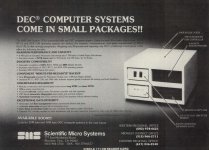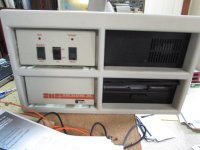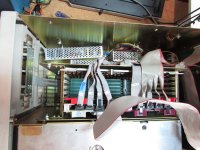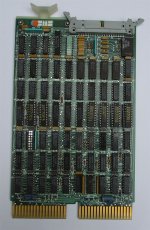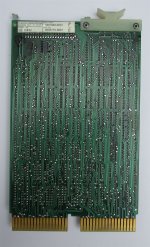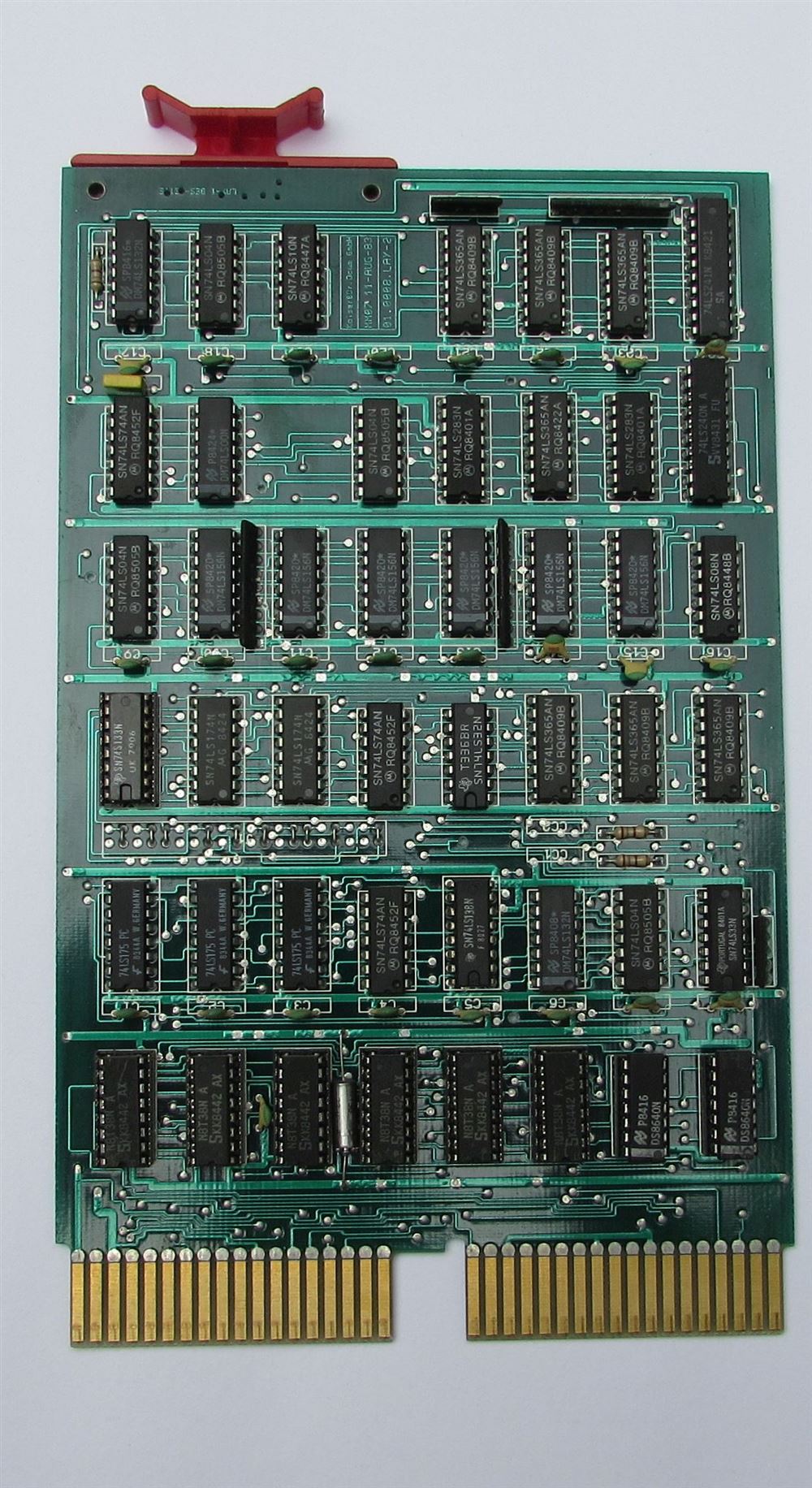Help, I have an SMS 11X PDP11 system.
Restored the hardware to the best of my ability.
It has an 8" HD that wont boot but the 8" FD will boot diagnostics.
I've tried a bunch of other "RT11" RX01 disks (SSSD) and it just halts.
What I need is tech info on this system because it has some special boards in it.
16-slot QBus backplane made by SMS
1 M8186 KDF11-A CPU board with 1 chip LSI 11/23
2 SMS disk controller cabled to another giant disk board then to HD and floppy. SMS zC2M
3 Sigma quad serial (1st port displays boot prompt)
4 Sigma quad serial
5 Kaiser & Damm, MOT 11 D1 with ribbon cable to, RAM and ROM, 6809, ROMs. CALMOT '83
6 Kaiser & Damm, MM07 (memory management?) 11.Aug.83
7-14 Unused
15-16 Camintonn CMV1000 memory board (probably 1mb)
I made a web page to describe it.
Looking for advice on how to boot RT11.
I suspect I just need the right media.
Or is the 1M memory board in the wrong place or something.
RogerArrick.com/sms11x
Restored the hardware to the best of my ability.
It has an 8" HD that wont boot but the 8" FD will boot diagnostics.
I've tried a bunch of other "RT11" RX01 disks (SSSD) and it just halts.
What I need is tech info on this system because it has some special boards in it.
16-slot QBus backplane made by SMS
1 M8186 KDF11-A CPU board with 1 chip LSI 11/23
2 SMS disk controller cabled to another giant disk board then to HD and floppy. SMS zC2M
3 Sigma quad serial (1st port displays boot prompt)
4 Sigma quad serial
5 Kaiser & Damm, MOT 11 D1 with ribbon cable to, RAM and ROM, 6809, ROMs. CALMOT '83
6 Kaiser & Damm, MM07 (memory management?) 11.Aug.83
7-14 Unused
15-16 Camintonn CMV1000 memory board (probably 1mb)
I made a web page to describe it.
Looking for advice on how to boot RT11.
I suspect I just need the right media.
Or is the 1M memory board in the wrong place or something.
RogerArrick.com/sms11x

